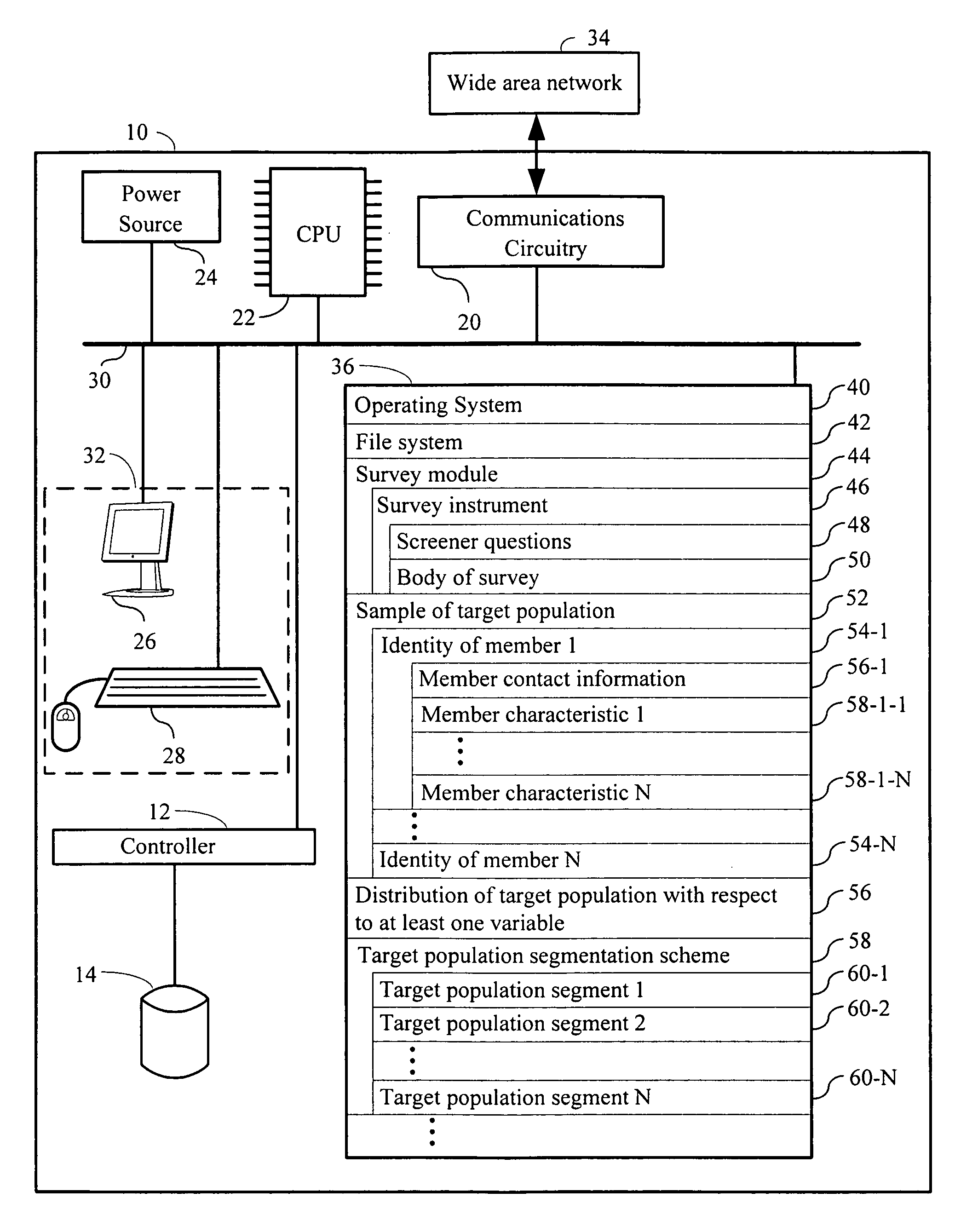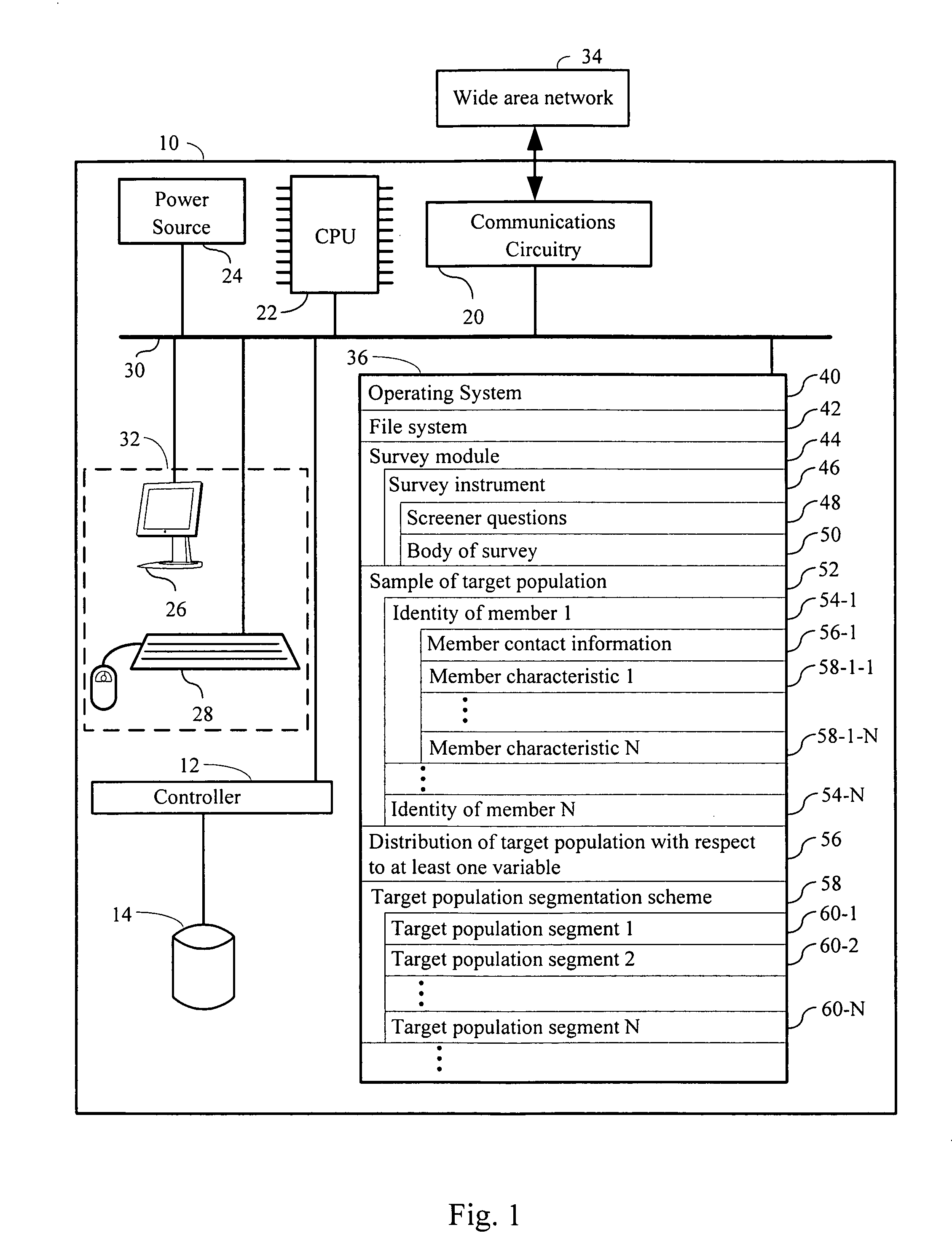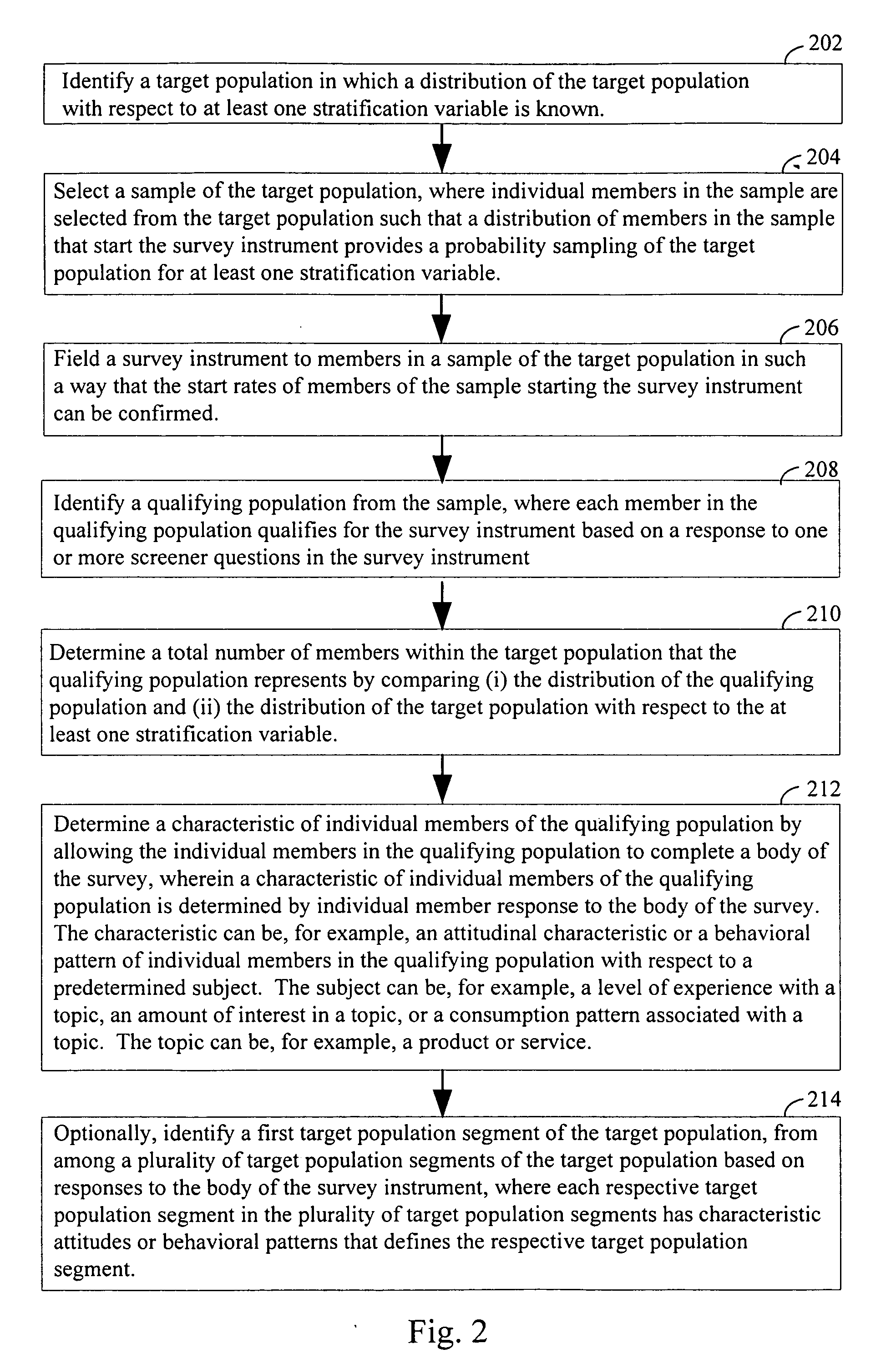Computer systems and methods for surveying a population
a computer system and population technology, applied in the field of systems and methods for surveying a population, can solve the problems of disproportionate disqualification of younger participants from surveying and inability to complete, and achieve the effect of better data regarding the subject matter
- Summary
- Abstract
- Description
- Claims
- Application Information
AI Technical Summary
Benefits of technology
Problems solved by technology
Method used
Image
Examples
Embodiment Construction
[0054]The present invention provides systems and methods for surveying a target population in which a survey instrument is fielded to members in a sample of the target population. A sample is a subset of the target population Individual members in the sample are selected from the target population such that the distribution of members in the sample that start the survey instrument provides a probability sampling of the target population for at least one stratification variable. Thus, every member of the target population has a known, nonzero probability of selection for the sample. A distribution of the target population with respect to the at least one stratification variable is known. A qualifying population is identified from the sample based on responses to one or more screener questions in the survey instrument. A total number of members within the target population that the qualifying population represents is determined based on a comparison of (i) the distribution of the qual...
PUM
 Login to View More
Login to View More Abstract
Description
Claims
Application Information
 Login to View More
Login to View More - R&D
- Intellectual Property
- Life Sciences
- Materials
- Tech Scout
- Unparalleled Data Quality
- Higher Quality Content
- 60% Fewer Hallucinations
Browse by: Latest US Patents, China's latest patents, Technical Efficacy Thesaurus, Application Domain, Technology Topic, Popular Technical Reports.
© 2025 PatSnap. All rights reserved.Legal|Privacy policy|Modern Slavery Act Transparency Statement|Sitemap|About US| Contact US: help@patsnap.com



